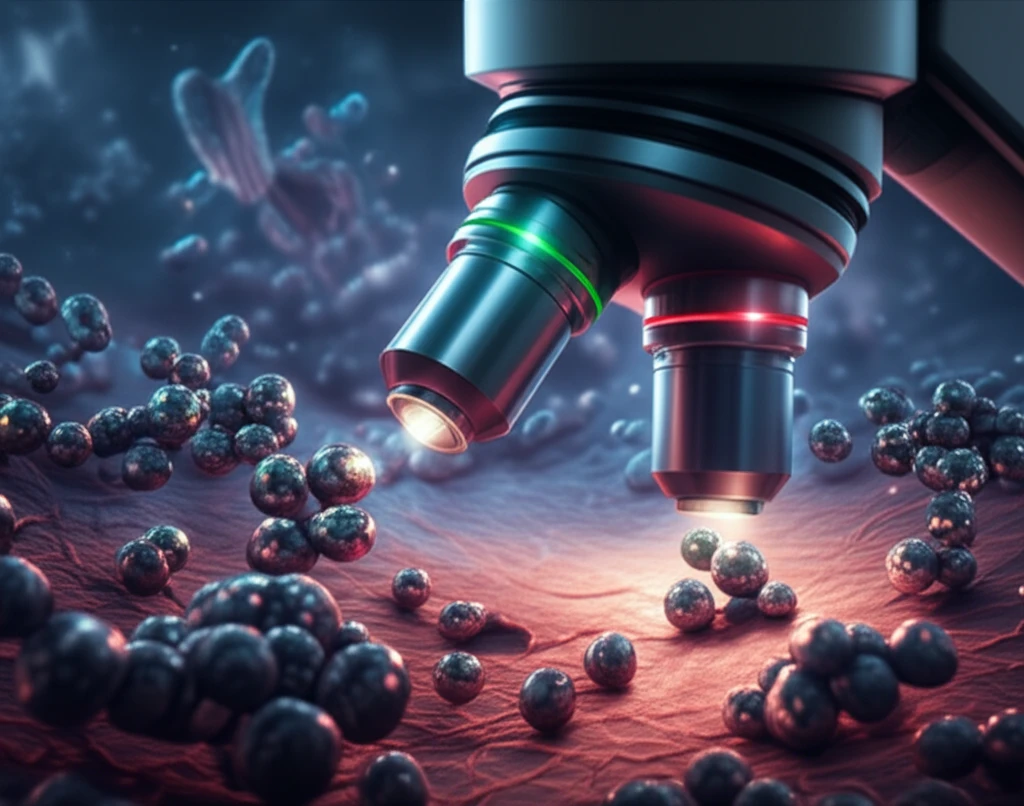
Unlock Early Cancer Detection: How a New DNA Analysis Technique Could Save Lives
"Emulsion PCR and allele-specific amplification offers a new, highly sensitive method for pinpointing rare mutations in circulating DNA, paving the way for earlier, more effective cancer treatments."
Imagine a world where cancer is detected not when it's already taken root, but at the very first whispers of its presence. Analyzing rare mutations, which is vital for biomedical research, has always been a challenge. Traditional methods often falter, succumbing to the overwhelming presence of normal DNA, making it difficult to spot the subtle but critical differences that signal the onset of disease.
Now, a promising solution has emerged, offering a sensitive and straightforward approach to identifying these elusive mutations. This method combines allele-specific amplification with emulsion PCR, enabling scientists to pinpoint rare mutations with unprecedented accuracy in a one-pot reaction.
This innovative technique uses magnetic beads coupled with allele-specific primers, allowing for the exclusive amplification and enrichment of mutant amplicons. By staining the productive beads bearing mutant amplicons with fluorescent dyes, even the most infrequent point mutations, as low as 0.1%, can be detected. The fluorescent analysis can help researchers roughly evaluate the relative percentages of the mutations.
Decoding Emulsion PCR: How Does Allele-Specific Amplification Work?

The process hinges on allele-specific primers attached to magnetic beads. These primers are designed to selectively bind to and amplify mutant DNA, ignoring the normal, wild-type DNA that often obscures the detection of rare mutations. This selective amplification occurs within tiny water-in-oil compartments created through emulsion PCR, ensuring that the amplification of rare mutant DNA isn't overwhelmed by the more abundant wild-type DNA.
- Compartmentalization: The DNA sample is divided into millions of tiny water-in-oil droplets, each acting as a separate reaction chamber. This ensures that each DNA molecule is amplified in isolation, preventing wild-type DNA from interfering with the amplification of rare mutant DNA.
- Allele-Specific Primers: The primers used in the PCR reaction are designed to bind specifically to the mutant DNA sequence. These primers are attached to magnetic beads, allowing for easy separation and enrichment of the amplified mutant DNA.
- Selective Amplification: Within each droplet, the allele-specific primers selectively amplify the mutant DNA, creating many copies of the mutated sequence.
- Fluorescent Tagging: After amplification, the newly created DNA copies are tagged with a fluorescent dye, making them easy to detect.
- Detection and Quantification: The magnetic beads containing the amplified mutant DNA are separated from the emulsion, and the amount of fluorescent signal is measured. This allows researchers to determine the proportion of mutant DNA in the original sample.
The Future of Early Cancer Detection is Here
This method marks a significant leap forward in our ability to detect rare mutations, opening new possibilities for early cancer diagnosis and personalized treatment strategies. By identifying mutations at their earliest stages, clinicians can potentially intervene sooner, improving patient outcomes and survival rates.
While this technique offers a promising solution, it's essential to acknowledge the challenges in quantifying rare mutations. The formation of cross dimers and the potential for false amplification of wild-type alleles can affect the accuracy of mutation percentage calculations. However, the relative percentages of mutation were reliable for the samples, indicating its reliability.
Looking ahead, refining this method and expanding its application to a broader range of cancer types could transform cancer diagnostics. Continuous monitoring of mutant alleles in the blood could offer invaluable insights into a patient's prognosis and response to therapy, paving the way for more effective and personalized cancer care.
